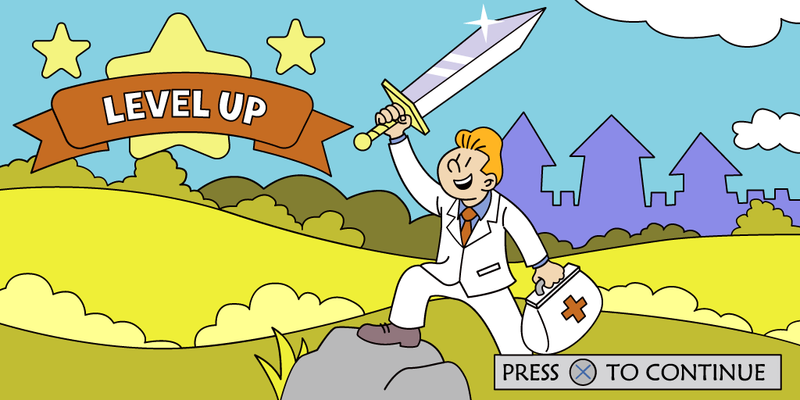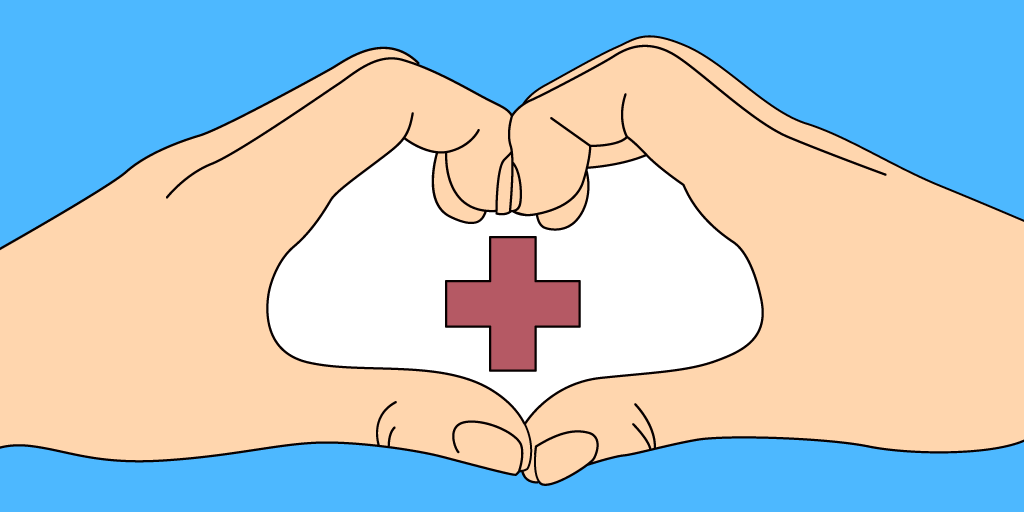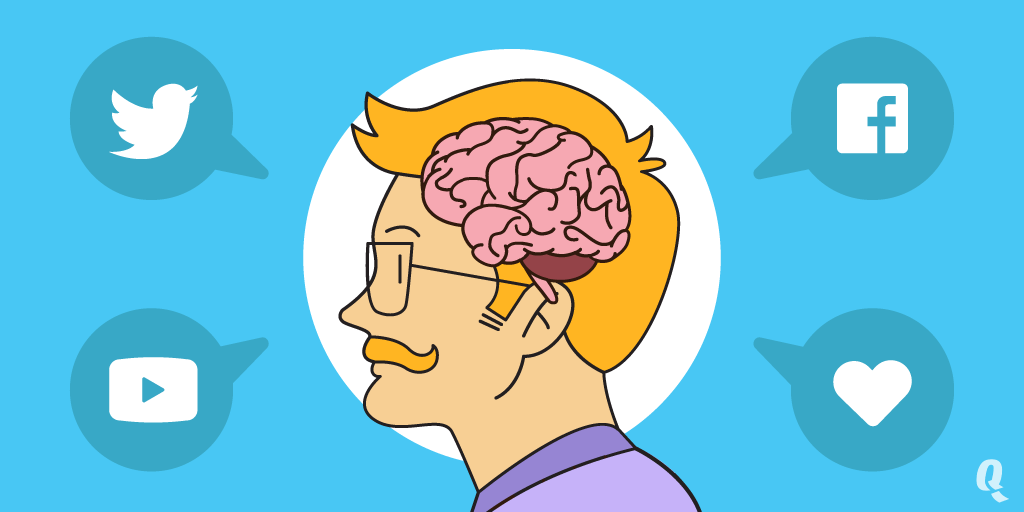We’ve written quite a lot about patient experience and patient satisfaction, but the topic of medical staff experience has been, so far, woefully lacking in attention.
Meanwhile, medical staff experience is something no hospital or clinic out there should ignore. Patients may be the bread and butter of healthcare, but doctors and nurses are its lifeblood. They are not some expendable resource you can use and throw away.
To help your doctors truly unlock their hidden potential and make them not only do good but also want to do good, you need to learn what great medical staff experience is made of — and level it up.
You already know all of this stuff but still have no idea where to begin? Qminder’s experience management system is being widely used by healthcare facilities around the world: Johns Hopkins, Hospital Corporation of America, Cure 4 The Kids Foundation, and many more.
The Ongoing Medical Experience Crisis
If you’re one of the people whose run-ins with doctors are limited to rewatching George Clooney on ER and who think all practitioners in real life look like Clooney clones, you should definitely pick up This Is Going to Hurt by Adam Kay. It is a fantastic, funny read that offers a sneak peek into the supposed glamor of working as a doctor.
Written as a disjointed journal, This Is Going to Hurt lists day-to-day situations the young doctor comes across, with almost rebellious disregard for tonal consistency. One minute, Kay is writing about a misinformed patient mixing up doctor’s recommendations, another he’s describing the misery of working on your own birthday.
In one of the journal entries, he remembers how a house officers attempted suicide by overdosing on antidepressants. Exhaustion and the high pressure of responsibility, coupled with “minimal supervision and absolutely no pastoral support”, does a number on human psyche.
The only surprising thing, Kay admits, is that this kind of situations did not occur more frequently at the hospitals.
According to a 2015 UK study, 85% of doctors have experienced mental health issues, and 13% admitted to suicidal thoughts. What’s more disturbing, young female doctors in the UK are 2.5 times more likely than women of other professions to commit suicide.
Kay’s assessment of healthcare’s disregard for its own practitioners’ wellbeing is unapologetic:
“In any other profession, if someone’s job drove them to attempt suicide, you’d expect some kind of inquiry into what happened and a concerted effort to make sure it never happened again.”
This is why improving medical staff experience matters, as it’s a question of more than simple convenience. The lives of doctors and nurses are under constant attack, with the only way out being improved medical staff experience.
The Plus Side of Higher Engagement

Happy doctors are not just those who sport a goofy smile on their face at all times. Happy doctors are satisfied with where they are and what they do, and their positive feelings rub off on their patients and everybody around them.
Happiness matters at the workplace, as happier people outperform their less happy colleagues not only in terms of sheer amount of tasks but also when it comes to the level of service. They are better team players and tend to be more social with other people — or, in our case, patients.
Then, there’s the matter of engagement influencing, either directly or indirectly, the effectiveness of treatment. A Gallup study shows how higher nurse engagement scores are inversely proportional to patient mortality.
What’s more, the National Database of Nursing Quality Indicators (NDNQI) also highlights that higher nurse satisfaction results in an 87% decrease in infection rate.
On Nurses and Their Importance
When talking about medical staff experience, it’s never wise to forget about nurses. They’re not just small cogs in the complex healthcare machine — hell, they’re one of the key players! It’s no secret that patients tend to trust nurses more than doctors.
In fact, nurses are among the most-trusted professional all around, coming second only to firefighters. Also, while public trust in nurses increased by 1% since the previous poll in 2007, public confidence in doctors dropped by 4% over the same period.
That is to say, pay more attention to your nurses. Quite often, they are the first faces your patients see — which makes them the face of your entire facility.
The Most Common Reasons for Unhappiness
Unhappiness is almost never irrational, and most of the time you can trace it to a definite source of problem. Despite doctors living the life that not you nor I would ever comprehend, there’s no reason to think that they operate on a different emotional level.
In fact, the most common reasons for unhappiness among medical staff are the same as for any other employee out there — no matter whether they’re working with engines or herding cattle.
Here are 6 most crucial reasons for employee unhappiness, healthcare edition.
1. Feeling Underappreciated

Individual recognition is not the easiest thing to pull off. The more employees you have, the harder it is to keep track of who did what. For hospitals with multiple wings and departments, this is all the more daunting.
Thankfully, there are employee performance monitoring tools that help you quickly understand the situation and observe who, for example, has served how many patients. Qminder’s Service Intelligence feature exists to recognize the hard-working employees and help those who find themselves falling behind.
2. Undefined Responsibilities
It’s easier for doctors who have a clear set of duties — for the most part, anyway. But if we look at nurses, they often have to juggle multiple tasks, not all of which they have signed up for. Being a healthcare provider is difficult enough, but when you have to clock in as a reception desk agent, things are surely to go awry.
Knowing what you’re responsible for lets the pressure off of your employees and let them not worry about things that aren’t related to their line of duty.
3. Lack of Continued Education
No room for advancement, or a feeling thereof, is another thing to contributes to employees thinking they’re stuck in a rut — or, more aptly, trapped in a hamster wheel.
It’s not only about career ladder, necessarily. Further education and advancements can come in the form of special courses at the expense of the management, which would help medical staff become better at their job.
Self-improvement is especially importantto Millennials. Work not meeting their expectations is one of the chief reasons why Generation X may quit the job.
4. Being Underpaid

No matter who you ask, everybody will claim they are being underpaid. Although the research shows that most people have no idea whether they’re paid fairly, our most natural instinct is to always complain about our salary.
That’s where a performance monitoring tool can be, once again, of great help, as it clearly shows how efficient each employee is. When an employee can provide solid evidence for being an overachiever, there’s that much ground for renegotiating the salary.
5. Having to Work With Outdated Equipment
The thing with obsolete technology is that it not only brings the overall efficiency down but is also a major killjoy. There’s nothing wrong with being a fan of the good old-fashioned ways — unless people’s health or even lives depend on you sticking to state-of-the-art technologies.
Just ask any guy who has to operate fax machines or a primitive printer that coughs up one page an hour. The question on the employee’s lips is, “Why can’t we finally join the 21st century and leave these godforsaken stone-age tools behind?”
On the one hand, hospitals are quick to embrace the recent medical advancements. On the other, they tend to lag behind when it comes to non-medical anything. For example, although sign-in sheets have been proven to be highly ineffective, many a hospital is still using them.
6. Feeling Overworked

We’ve written about the negative effects of overworking your nurses before, but some things bear repeating. Overstressed, under-rested, fatigued nurses are a safety hazard, plain and simple: 210,000 to 440,000 patients die at hospitals each year as a result of medical errors.
Understandably, the stress of working overtime takes a toll on the happiness of the medical staff, too. Rational use of work time is why the idea of six-hour working days keeps floating around nowadays. Perhaps there is merit to it, even in healthcare.
Crisis Averted
If you pay attention to most, or better yet, all of these pain points, the experience of your medical staff will surely shoot through the roof. The concept is not hard to grasp: Be mindful of doctors and nurses working at your hospital.
Clinics are there to improve the wellbeing of patients, so why shouldn’t the health of medical staff also be the focus of healthcare? Hey, it’s right there, in the name!
Our team is crazy about designing premium customer experience for hospital waiting rooms. (Let’s be honest, it’s one of the most annoying stages in every customer journey, healthcare included).
We’ve managed to increase customer satisfaction, decrease wait times by more than 50%, and find ways to lower the stress level for everyone involved, from customers to staff.
Our vision is to replace this crude-sounding term "crowd management" with whatever is the antonym of the word “annoying”. Who doesn't enjoy tranquility? Your staff and patients surely do.






